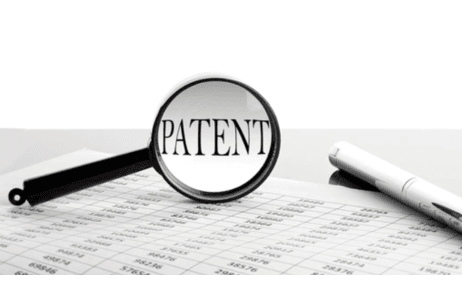Introduction In the realm of obtaining a patent right, conducting a ‘novelty search’ stands as…
Federal Circuit Rules 180-Day Post-Licensure Notice is Mandatory in Biosimilar Litigation
In Amgen v. Apotex (No. 2016-1308), the US Court of Appeals for the Federal Circuit on July 5, 2016 affirmed a district court’s ruling that a biosimilar applicant must provide a reference product sponsor with 180 days’ post-licensure notice before commercial marketing of a biosimilar product begins, regardless of whether the applicant provided the § 262(l)(2)(A) notice of USFDA review.
In Amgen v. Apotex, the Federal Circuit rejected Apotex’s contention that the 180-day pre-marketing notice requirement does not apply to biosimilar applicants who participated in the “patent dance” procedure of the Biologics Price Competition and Innovation Act (“BPCIA”), expanding on its decision in Amgen v. Sandoz that the 180 days notice provision under § 262(l)(8)(A) is mandatory in all circumstances, whether or not the applicant engages in the patent dance.
Background:
The biologic product at issue is Amgen’s Neulasta® (pegfilgrastim). Pegfilgrastim is a PEGylated form of the recombinant human granulocyte colony-stimulating factor (GCSF) analog filgrastim. Pegfilgrastim treatment that can help patients make white blood cells after receiving cancer treatment. After Apotex filed a Biologic License Application (BLA) seeking FDA approval to market a biosimilar version of Neulasta® (pegfilgrastim), the parties began the BPCIA’s patent information exchange process, known as the “patent dance”, and as a result, Amgen concluded that two patents U.S. Patent Nos. 8,952,138 and 5,824,784 will be infringed by Apotex’s biosimilar version of Neulasta®. Those infringement claims are being litigated in the U.S. District Court for the Southern District of Florida, although the ‘784 patent has been dropped since it expired.
Apotex sent Amgen a letter on April 17, 2015, stating that it was “providing notice of future commercial marketing pursuant to § 262(l)(8)(A), though Apotex lacked an FDA license.” Amgen sought a preliminary injunction to “require Apotex to provide … notice if and when it receives a marketing license from FDA and to delay any commercial marketing for 180 days from that notice.” The district court granted that motion, citing the Federal Circuit’s decision in Amgen v. Sandoz that notice cannot be given before the biosimilar product is approved. Apotex appealed.
What is Biosimilar Patent Dance:
The US Biosimilars Act sets forth several requirements for biosimilar applications, including the so-called “Patent Dance” which describes the process by which the biosimilar applicant and the reference product sponsor (“RPS”) exchange patent-related information for resolving any patent disputes before a biosimilar product can enter the US market. This procedure has strict timing and sequencing requirements and involves several rounds of information exchanges between the reference product sponsor and the biosimilar applicant. Some of the key steps of this process include:
- Within 20 days after the FDA has accepted its abbreviated application, the biosimilar applicant must provide the reference product sponsor with confidential access to the biosimilar application and relevant manufacturing information for the proposed biologic.
- Within 60 days of receiving these materials, the reference product sponsor must provide to the biosimilar applicant: (1) a list of patents it believes are infringed, and (2) identify which, if any, of these patents it would be willing to license to the biosimilar applicant.
- Within 60 days of receipt of the patent list, the biosimilar applicant must provide the reference product sponsor a statement describing, on a claim-by-claim basis, the factual and legal basis as to why each patent is invalid, unenforceable, and/or not infringed. Within this same 60 day period, the biosimilar applicant may provide to the reference product sponsor a counter list of patents that the biosimilar applicant believes could be subject to a claim of patent infringement.
- Within 60 days of receiving these materials, the reference product sponsor must provide a reciprocal statement describing, on a claim-by-claim basis, the factual and legal basis that each patent will be infringed, as well as a response to any statement regarding validity and enforceability.
- The parties then have up to 15 days to negotiate in good faith to arrive at a list of patents, if any, that should be subject to a patent infringement action.
– If the parties reach agreement, then the reference product sponsor must bring an infringement action within 30 days for each patent on the negotiated list.
– If the parties do not reach agreement, the biosimilar applicant must notify the reference product sponsor of the number of patents it will provide in a second list, and the parties then simultaneously exchange within 5 days of this notice a list of patents that each party believes should be the subject of the infringement litigation. Within 30 days after this exchange, the reference product sponsor must bring an infringement action on all the patents on the simultaneously exchanged lists.
The Federal Circuit’s decision in the Amgen v. Apotex case:
Two provisions of the BPCIA were at play in the Federal Circuit’s decision. First, under § 262(l)(2)(A), the biosimilar applicant initiates the statutory “patent dance” by providing a copy of its biosimilar application and information about how its product is manufactured. Second, under § 262(l)(8)(A), the applicant must provide a notice to the innovator 180 days before the first commercial marketing of the biosimilar product.
In Amgen v. Apotex, Apotex argued that it had followed the patent dance procedure and made its (2)(A) disclosures to Amgen, and that the (8)(A) notice of commercial marketing is only mandatory if the applicant failed to provide the information required by (2)(A).
The Federal Circuit rejected this argument and upheld the district court’s grant of an injunction to Amgen. The court held that (8)(A) is mandatory in all circumstances, whether or not the applicant engages in the patent dance.
The Federal Circuit looked to the text of the law, finding that the “language of (8)(A) is categorical”, and there is “no other statutory language that effectively compels a treatment of (8)(A) as non-mandatory.” The court further noted that § 262(l)(8)(A) “contains no words that make the applicability of its notice rule turn on whether the applicant took the earlier step of giving the § 262(l)](2)(A) notice that begins the patent dance (i.e. information-exchange) process,” and stood by its holding in Amgen v. Sandoz that the statute is “‘a standalone notice provision’ not dependent on the information-exchange processes that begin with (2)(A).” The court held that “the (8)(A) notice must be a notice given after FDA licensure of the biosimilar product, not before, and that pre-licensure notices are of no legal effect for purposes of (8)(A)”. The court explained that the 180 days period gives the reference product sponsor a period of time to assess and act upon its patent rights.
In sum, the Federal Circuit concluded that a biosimilar applicant must provide a reference product sponsor with 180 days’ post-licensure notice before commercial marketing begins, regardless of whether the applicant provided the (2)(A) notice of FDA review.
About the Author: Antony David, Senior Patent Associate at Khurana & Khurana, Advocates and IP Attorneys and can be reached at: [email protected].



